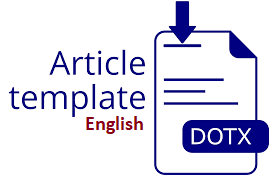Penerapan Uji Fungsionalitas dan Uji Pengguna Augmented Reality Word Warrior Sebagai Media Ajar Kosakata Bahasa Inggris
DOI:
https://doi.org/10.47065/bulletincsr.v4i3.301Keywords:
Augmented Reality (AR); Game; Functionality Testing; User Testing; Instagram FilterAbstract
This research developed and tested the "Word Warrior" game based on Augmented Reality (AR), applied as an Instagram filter, as a medium for teaching English vocabulary. The method used was Research and Development (R&D) with the 4D model (Define, Design, Development, Dissemination). The study focused on functionality and user testing. Functionality testing showed that all game features worked according to specifications after several improvements. User testing involved students from Politeknik Negeri Medan, indicating that the game is easy to use and well-received, with an overall product rating of 78.5. The lowest average score was found in the game mechanics aspect, with a value of 77.5, although this aspect was still rated as good. This will serve as a basis for future evaluations and improvements to enhance the comfort and ease of use for future players. In conclusion, the AR-based "Word Warrior" game effectively serves as a vocabulary teaching medium, meeting user needs and expectations, and providing important references for the further development of AR-based educational games in the future.
Downloads
References
A. S. Chan, A. Lukcyhasnita, G. A. Hutagalung dan P. P. Putra, “Augmented Reality Buku Iqra Untuk Anak Usia Dini Sebagai Optimasi Minat Belajar,” SATIN –Sains dan Teknologi Informasi, vol. 7, no. 2, pp. 113-120, 2021.
G. Trefry, Casual Game Design Designing Play for the Gamer in All of Us, Boca Raton: CRC Press, 2017.
J. Juul, A Casual Revolution: Reinventing Video Games and Their Players, Massachusetts: MIT Press, 2010.
Andani, B. E. W. Asrul, A. D. Achmad dan P. Wahyuningsih, Teknologi Augmented Reality Untuk Media Pembelajaran, Surabaya: Cipta Media Nusantara, 2024.
D. Graham, R. Black dan E. V. Veenendaal, Foundations of Software Testing ISTQB Certification, 4th edition, Boston: Cengage Learning, 2019.
Henriyadi dan R. Mulyati, “Usability Testing for Information system: A case study of IAARD PublicationRepository Information System,” Jurnal Perpustakaan Pertanian, vol. 23, no. 2, pp. 54-63, 2016.
R. Y. Ariyana, E. Susanti, M. R. Ath-thaariq dan R. Apriadi, “Penerapan Uji Fungsionalitas Menggunakan Black Box Testing pada Game Motif Batik Khas Yogyakarta,” JUMINTAL: Jurnal Manajemen Informatika Dan Bisnis Digital, vol. 2, no. 1, pp. 33-43, 2023.
M. N. Akbar, M. Ikhsan dan C. M. Zubainur, “Uji Fungsionalitas Media Pembelajaran Game Platform,” JIMPMat:Jurnal Ilmiah Mahasiswa Pendidikan Matematika, vol. 5, no. 2, pp. 79-88, 2020.
N. N. A. Trisnawati, I. M. Putra dan A. A. K. O. Sudana, “Uji Fungsionalitas Sistem Informasi Manajemen,” Jurnal Ilmiah Teknologi dan Komputer, vol. 2, no. 3, pp. 524-534, 2021.
M. Huda, “ANALISIS USER EXPERIENCEPADA GAME MOBILE LEGEND VERSI 1.4.14.4454 DENGAN MENGGUNAKAN GAME-DESIGN FACTOR QUESTIONNAIRE,” Junral Ekonomi dan Teknik Informatika, vol. 8, no. 1, pp. 25-34, 2020.
M. A. Zakariah, V. Afriani dan K. M. Zakariah, METODOLOGI PENELITIAN KUALITATIF, KUANTITATIF, ACTION RESEARCH, RESEARCH AND DEVELOPMENT (R n D)., Kolaka: Yayasan Pondok Pesantren Al Mawaddah Warrahmah Kolaka, 2020.
M. S. Iswahyudi, Lismawati, R. Wulandari, H. Samsuddin, I. Sukowati, S. Nurhayati, M. Makrus, M. M. Amalia, H. Faizah dan N. P. E. Febianingsih, BUKU AJAR METODOLOGI PENELITIAN, Jambi: Sonpedia Publishing Indonesia, 2023.
M. N. Sari, S. Mudrikah, Y. B. Keban, M. T. Bua, Apdoludin, P. E. A. Ningsih, A. Budiyono, Ishak, D. P. Hanifah, A. Dailami dan M. R. Cuhanazriansyah, Metodologi Penelitian Tindakan Kelas & Research and Development, Sukoharjo: Pradina Pustaka, 2024.
W. T. S. Putra, S. Zakir, Z. Sesmiarni dan Iswantir, “Desain Media Pembelajaran GameEdukasi pada Mata Pelajaran Sejarah Kebudayaan Islam Kelas X di MAN Sibolga,” Intellect : IndonesianJournal of Innovation Learning and Technology, vol. 1, no. 1, pp. 113-125, 2022.
M. Fitrah dan Luthfiyah, Metodologi penelitian: penelitian kualitatif, tindakan kelas & studi kasus, Sukabumi: Jejak (Jejak Publisher), 2018.
M. Purnasari, Y. Hertiwi dan Nurhayati, “Perancangan Sistem InformasiPengelolaan Dana MasjidBerbasisWebMenggunakan Unified Modeling Language (UML),” RESOLUSI :Rekayasa Teknik Informatika dan Informasi, vol. 2, no. 6, pp. 258-264, 2022.
S. Dharwiyanti dan R. S. Wahono, “Pengantar Unified Modeling,” Ilmikomputer.com, 2003.
M. R. Ginanjar, A. Prehanto dan R. G. Guntara, “Evaluasi dan Rekomendasi Usability Pada Fitur Pemesanan Bike di Aplikasi Mobile Maxim Dengan Metode Usability Testing dan Use Questionnaire,” Madani: Jurnal Ilmiah Multidisiplin, vol. 1, no. 7, pp. 163-171, 2023.
E. Kurniawan, Nofriadi dan A. Nata, “PENERAPAN SYSTEM USABILITY SCALE (SUS) DALAM PENGUKURAN KEBERGUNAAN WEBSITE PROGRAM STUDI DI STMIK ROYAL,” Journal of Science and Social Research, vol. V, no. 1, pp. 43-49, 2022.
E. Febianti, N. Wahyuni dan D. H. Muhamad, “PERANCANGAN SISTEM INFORMASI KUESIONER EVALUASI PROSES BELAJAR MENGAJAR BERBASIS WEBSITE PADA JURUSAN TEKNIK INDUSTRI UNTIRTA,” Journal Industrial Servicess, vol. 4, no. 2, 2019.
Bila bermanfaat silahkan share artikel ini
Berikan Komentar Anda terhadap artikel Penerapan Uji Fungsionalitas dan Uji Pengguna Augmented Reality Word Warrior Sebagai Media Ajar Kosakata Bahasa Inggris
ARTICLE HISTORY
How to Cite
Issue
Section
Copyright (c) 2024 Andam Lukcyhasnita, Ferry Fachrizal, Juneidy

This work is licensed under a Creative Commons Attribution 4.0 International License.
Authors who publish with this journal agree to the following terms:
- Authors retain copyright and grant the journal right of first publication with the work simultaneously licensed under Creative Commons Attribution 4.0 International License that allows others to share the work with an acknowledgment of the work's authorship and initial publication in this journal.
- Authors are able to enter into separate, additional contractual arrangements for the non-exclusive distribution of the journal's published version of the work (e.g., post it to an institutional repository or publish it in a book), with an acknowledgment of its initial publication in this journal.
- Authors are permitted and encouraged to post their work online (e.g., in institutional repositories or on their website) prior to and during the submission process, as it can lead to productive exchanges, as well as earlier and greater citation of published work (Refer to The Effect of Open Access).














